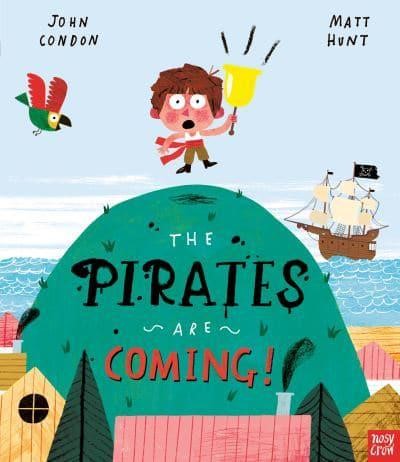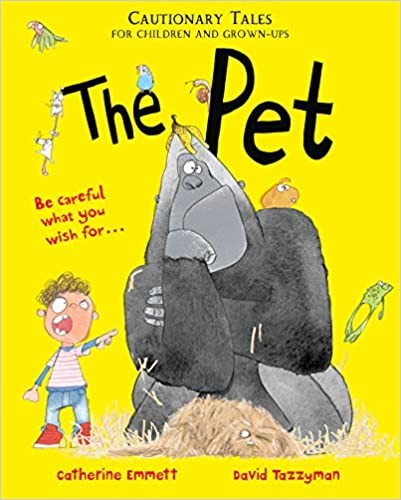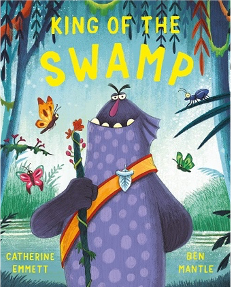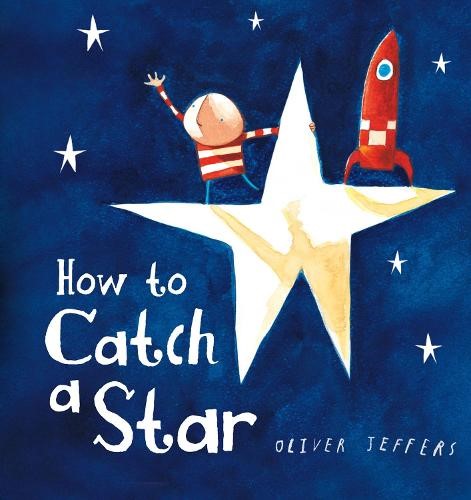Picture book author Catherine Emmett on her love of the page turn, and how important they are within the picture book form.

**SPOILER ALERT**
**Twist endings are revealed!**
Page turns are one of my favourite things about picture books. The delight and surprise that they can inspire in a little reader (and sometimes in a big reader too!) is wonderful. I have to admit that I gasped at the final page turn of Oliver Jeffers’ How to Catch a Star the first time I read it!
Page turns come in a variety of forms, but at the heart of them all is a subversion of our expectations. And in a world where everything has been seen before, being surprised while reading a book can generate a true feeling of wonder.
Some page turns challenge the reader’s own perceptions and stereotypes – they can surprise us and make us reassess how we see the world.

One of my favourites is in The Pirates Are Coming by John Condon and Matt Hunt. The villagers keep a look out for pirates and have a number of false alarms, but when the pirates finally arrive, we find out that in fact they aren’t terrifying looters, they are in fact the villagers’ mums. Subverting our expectation of both the gender and temperament of the pirates all in one terrific twist.

Sometimes, as we read a story, it sets us up to believe that a character will eventually behave in a certain way. In The Pet I had Digby David refuse to look after his pets. While many stories show the character learning and changing their ways, that expectation is subverted here. Rather than learning his lesson, Digby ends up living very happily with the gorillas in the zoo, while his pet gorilla makes for a far better-behaved little boy than Digby ever did.

Other picture books use an unexpected transformation to surprise the reader. In King of the Swamp, all appears to be lost for McDarkly when his orchids has been destroyed by grubs. It seems unavoidable that the king will return and concrete the swamp to turn it into a roller skate park. However, just in time, the caterpillars turn into butterflies showing that the swamp is full of beauty after all and persuading the princess to protect it.

Some picture books lead us down the path to believe that all hope is lost, before coming up with a clever ‘bait and switch’ to save the ending. In How to Catch a Star by Oliver Jeffers a little boy is desperate to catch his very own star, but Jeffers does a brilliant job of making his dream seem hopeless. As he tries to catch ‘a tired star that has fallen from the sky into the sea’, the reader knows that the little boy will never capture this watery reflection. However, at the last moment, Jeffers has the little boy finding a star fish and catching his very own star after all.
The secret of page turns is to make sure that the twist fits the story and, whilst unexpected, it can’t come completely from left field. They’re best used at the turning point of the story, when the character is experiencing their darkest hour. Ideally you want to reader to believe that all hope surely is surely lost, before revealing the unexpected outcome. Personally, I think they are the very best way to end a story!
Trick or Treat? by Catherine Emmett and illustrated by Laura Brenlla (published by Oxford Children's) is available to buy now
Read a Q&A with Catherine here
Catherine grew up in Newcastle and spent all of her childhood reading books. When she grew up, she spent fourteen years making spreadsheets and not reading any books at all. After advising a group of young girls to find a career that they loved, she decided to take her own advice. She packed up her husband and her three young boys, moved to rural Essex and started to write picture books. She now spends her days surrounded by words, animals and noisy boys. When she needs a bit of peace and quiet, she can be found running (very slowly) across muddy fields. www.catherineemmett.co.uk
Comments